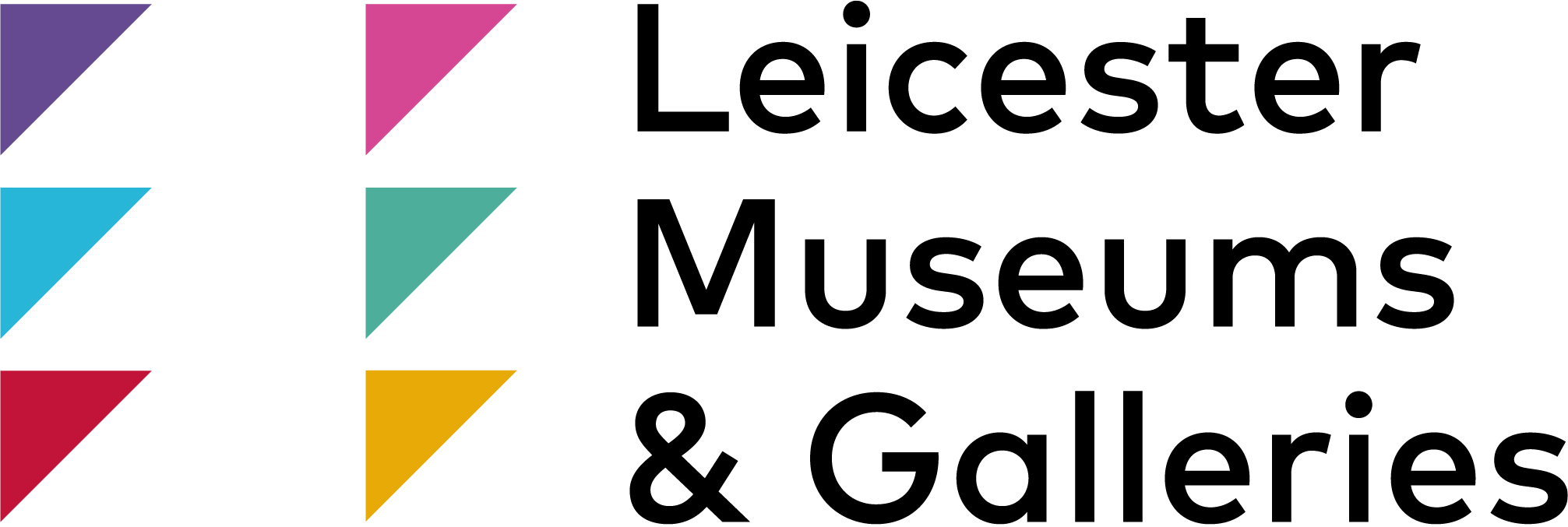Typewriters Inspiring Digital Creativity
In March 2024, De Montfort University organised an event at Leicester Museum & Art Gallery to inspire creativity and support digital upskilling through interactions with museum collections. Attendees were able to view a selection of five typewriters not currently on display to explore their unique designs.
Published: 5 May 2024
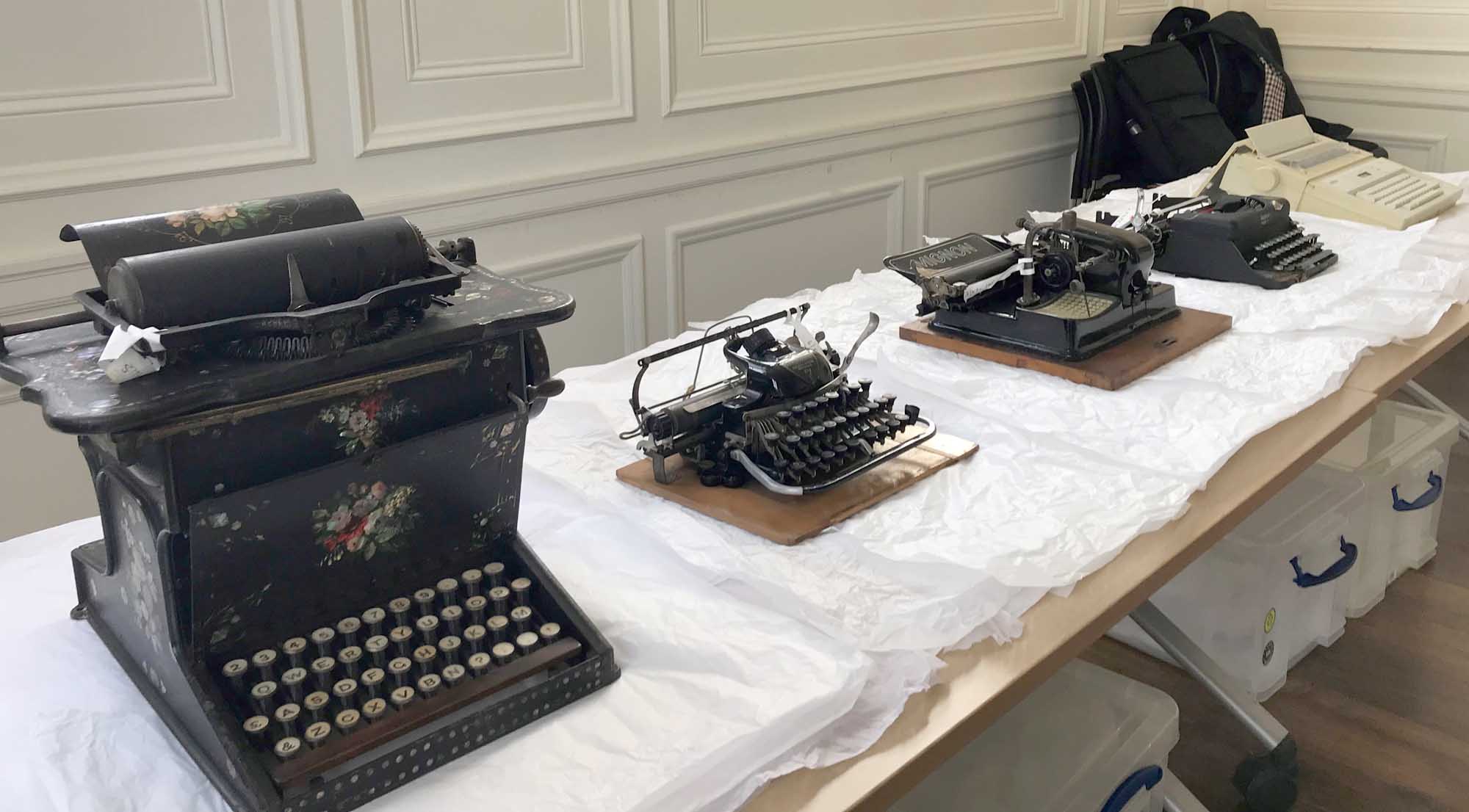
Five typewriters from the Museum collection at the student workshop
Sholes and Glidden (1874)
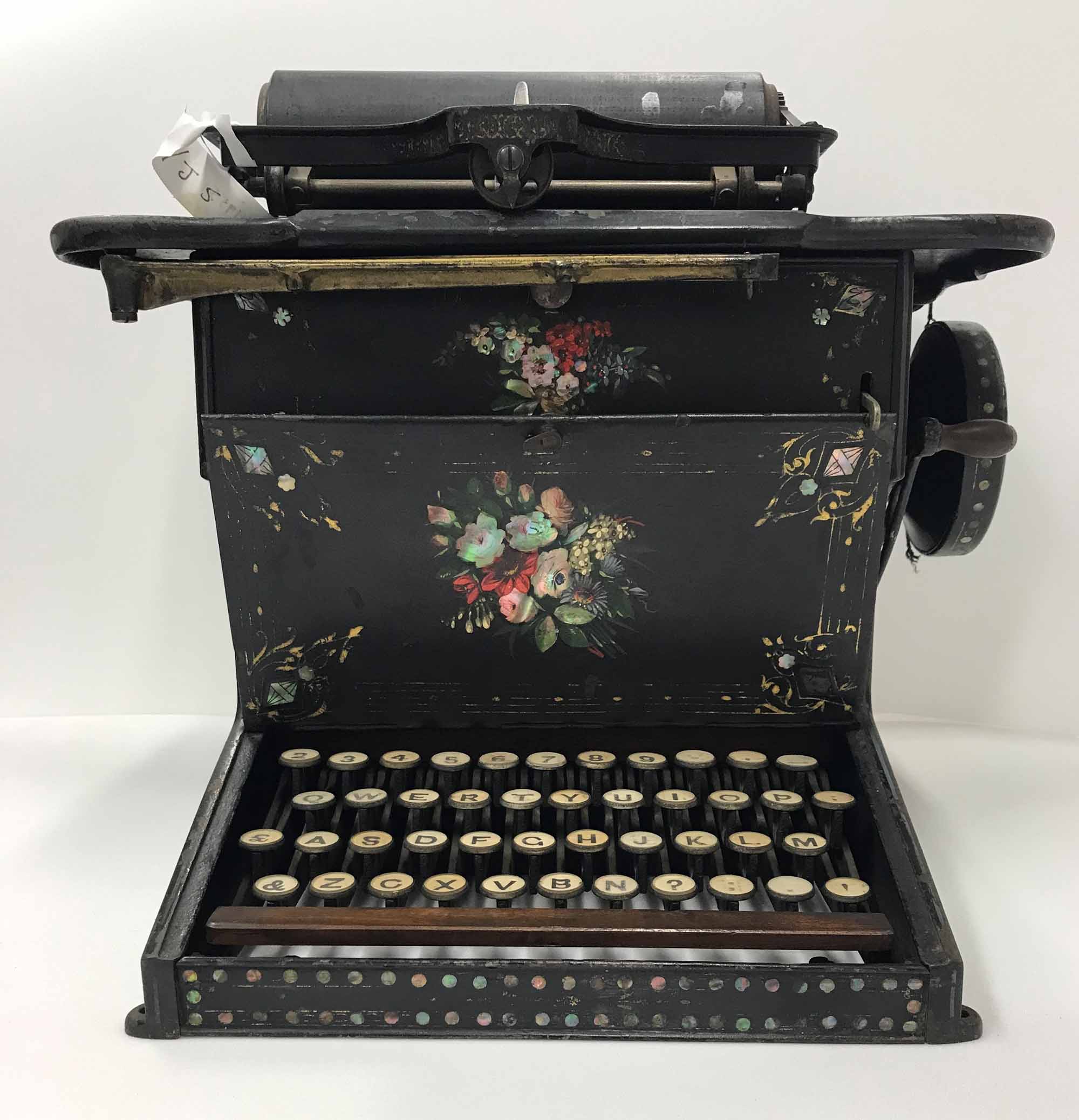
The 1874 Sholes and Glidden typewriter was regarded as the first commercially successful typewriter and featured the first appearance of the QWERTY keyboard. Manufactured by Remington & Sons, it shared characteristics with the sewing machines they also produced, initially requiring a foot pedal to return the carriage and decorated with ornate floral designs.
Blickensderfer 7 (1897)
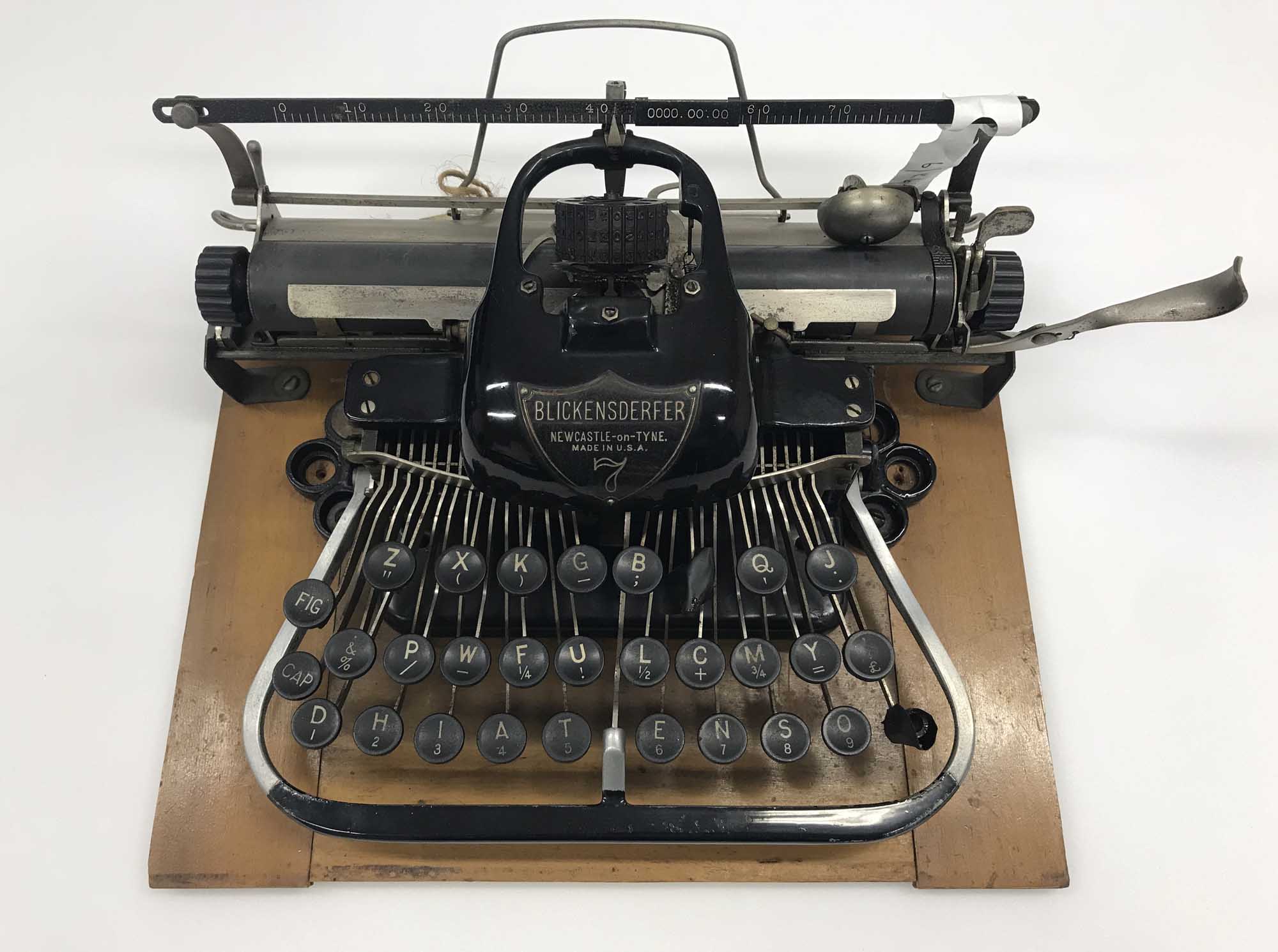
Blickensderfer produced the first portable typewriters, with the 1897 model 7 representing the deluxe version of their basic design. Significantly lighter than others at the time, it used a single typewheel mechanism rather than type hammers. Despite having its own DHIATENSOR keyboard layout, customers could apply for the popular QWERTY setup.
Mignon model 2 (1912)
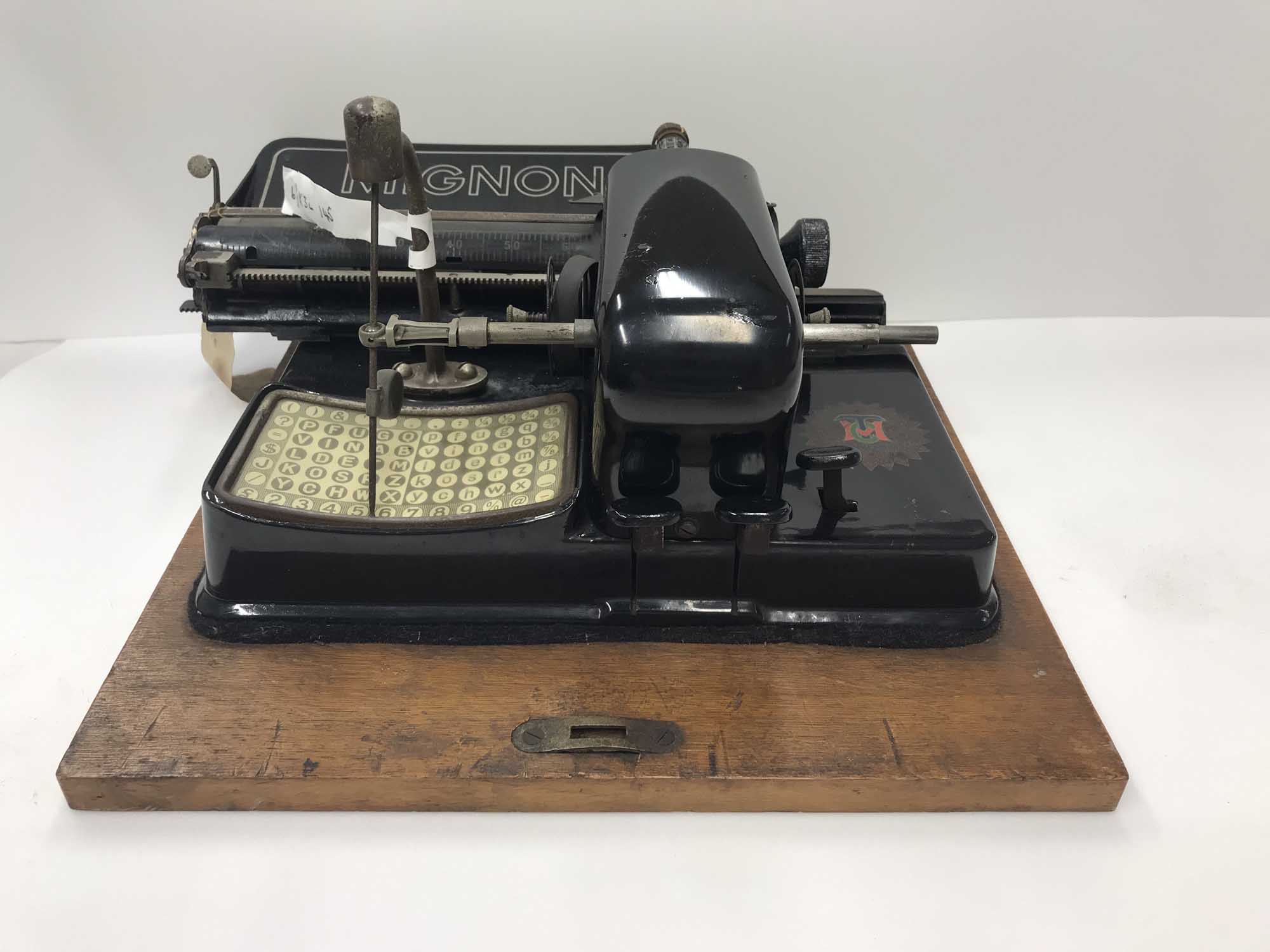
Manufactured in 1912, the Mignon model 2 provided an alternative to the conventional typewriter with its index mechanism. Rather than a keyboard, users needed to move an indicator with one hand to select characters on an index card and press a button with their other hand to strike the ink ribbon.
Imperial Model T (1940)
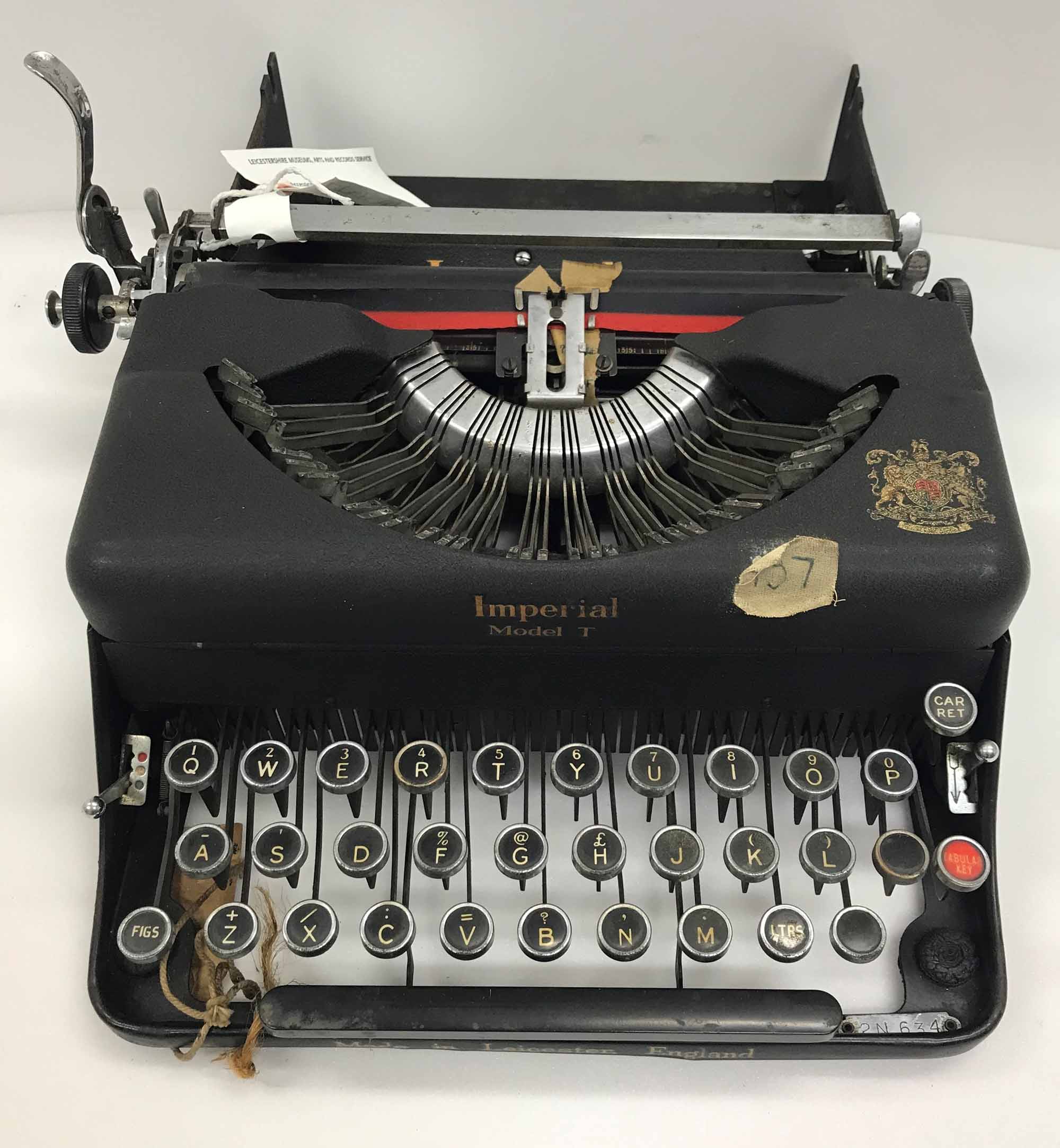
The Leicester-made Imperial Model T typewriter dates to 1940 and was part of the ‘The Good Companion’ series. However, this example differs from the standard Model T design. The unusual three-row keyboard with no lower-case letters allow us to identify this machine as a telegrapher’s typewriter. This illustrates the adaptation of a model to meet specific user requirements.
Brother AX-130 (1991)
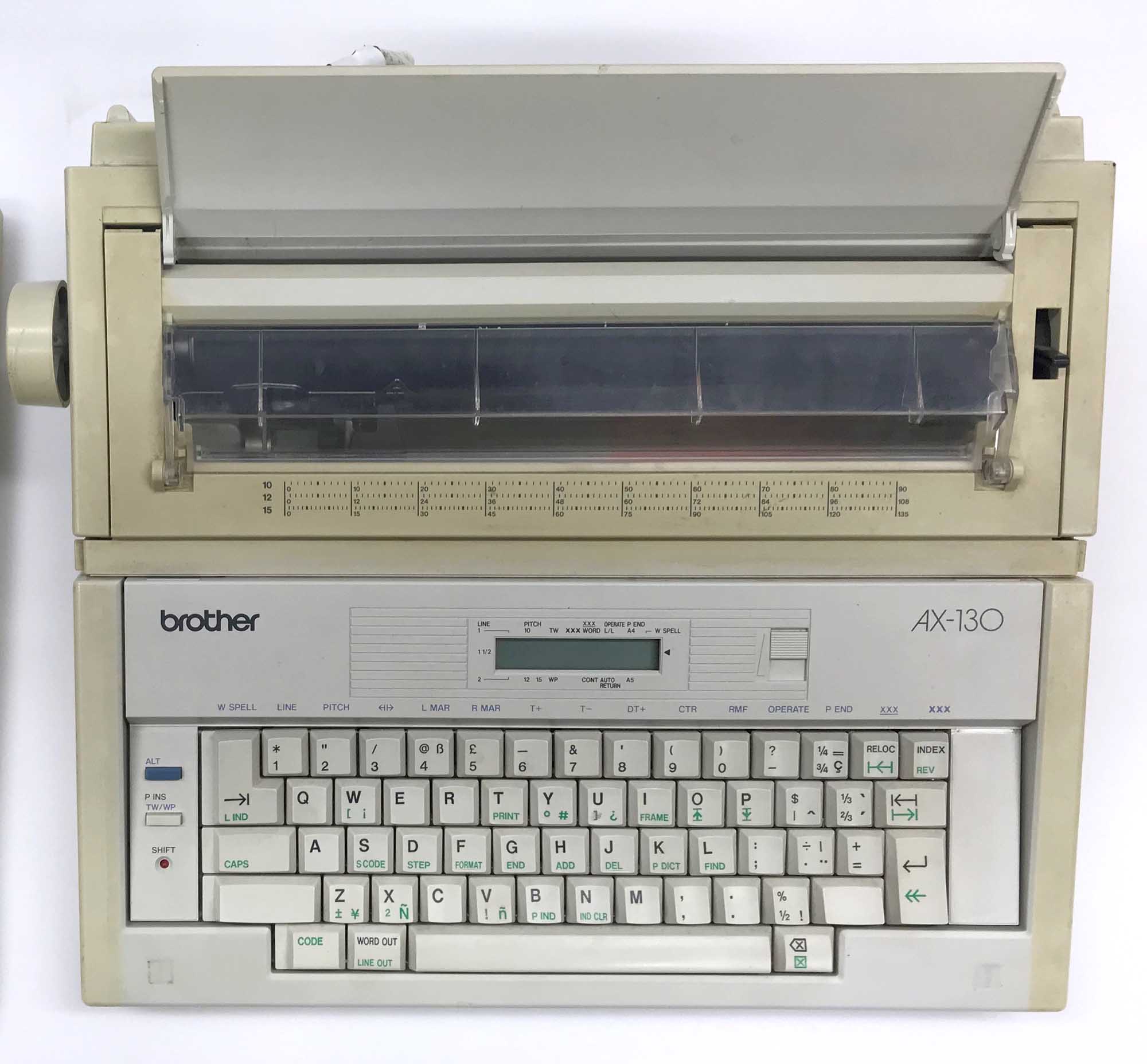
The Brother AX-130 made in 1991 is an example of an electronic typewriter. Encased in plastic and featuring a small LCD screen display to preview text, it resembles an early personal computer. Using a carbon polymer ribbon, text was printed clearly and evenly. An additional correcting ribbon meant mistakes could easily be erased from the paper.
These museum objects encouraged the group to question and consider the creativity of each design. Attendees were excited to see the continued use of the QWERTY keyboard on their mobile phones and compared the index typewriter with modern touch screens. Inspired by the collection, the group went on to participate in a creative writing task set by De Montfort University.
